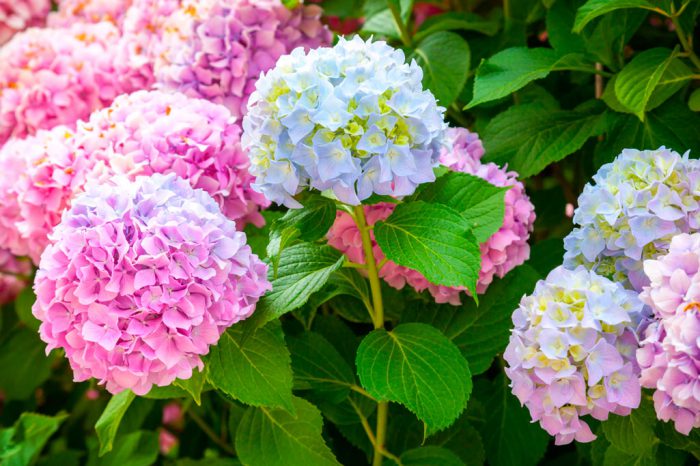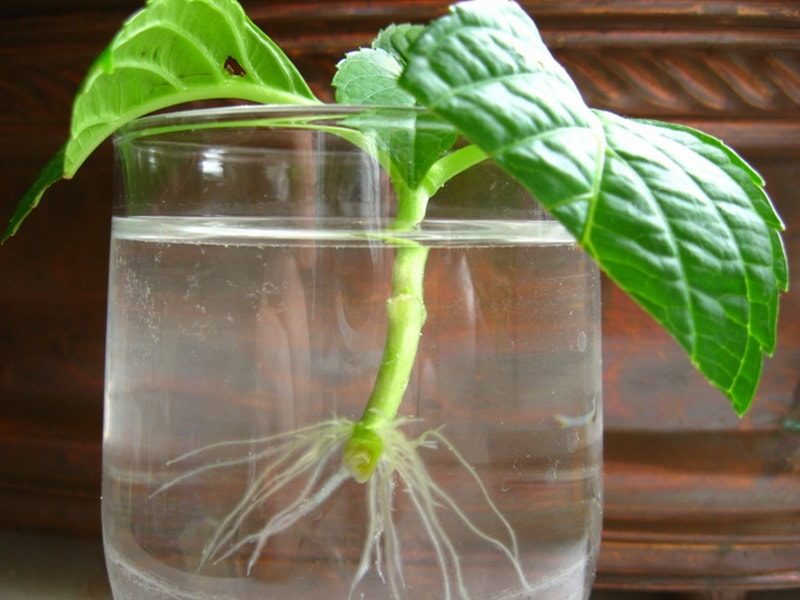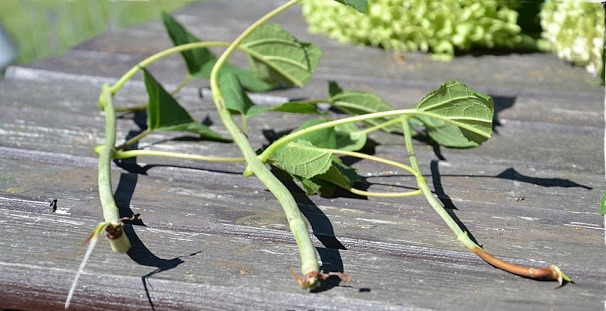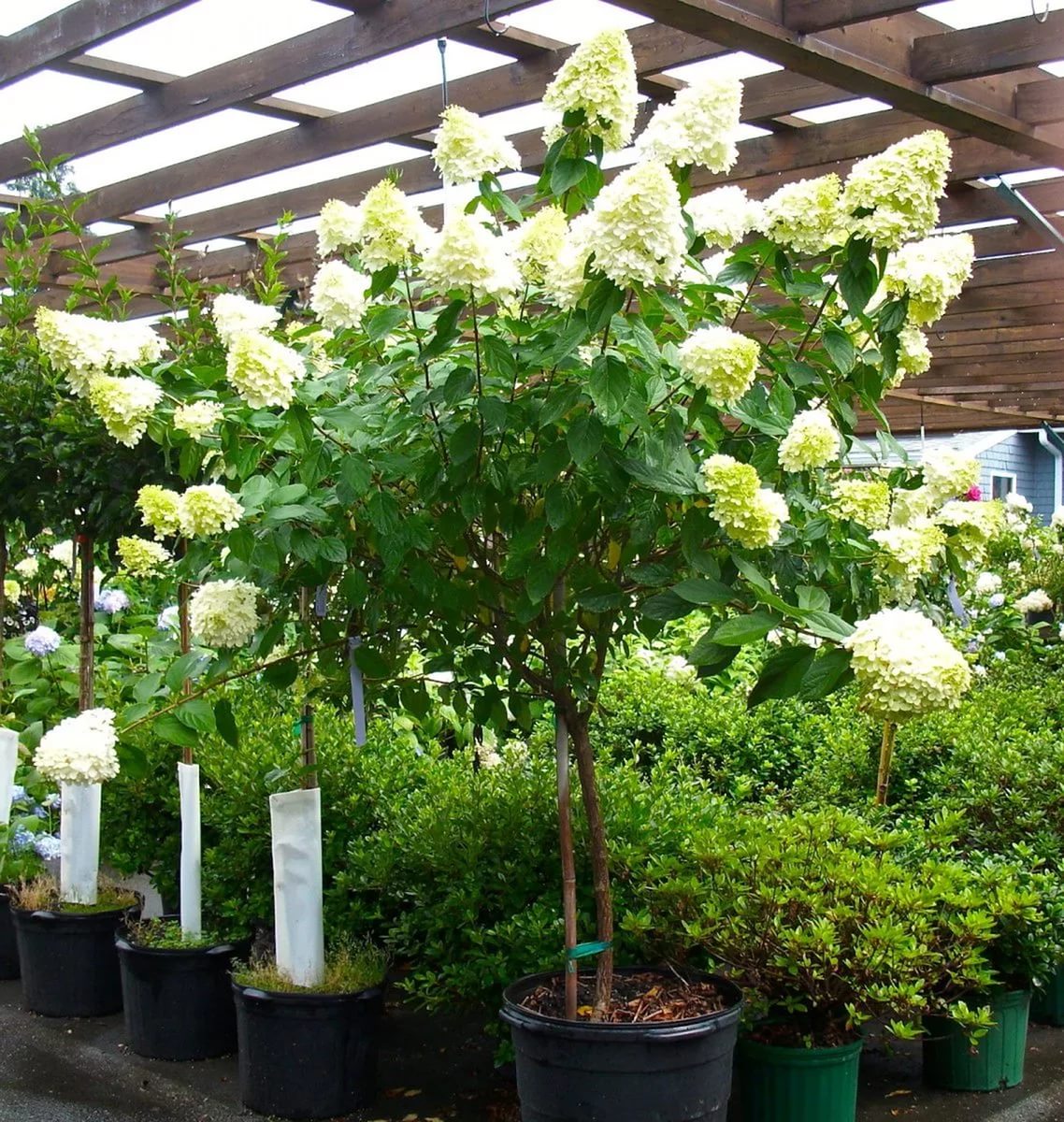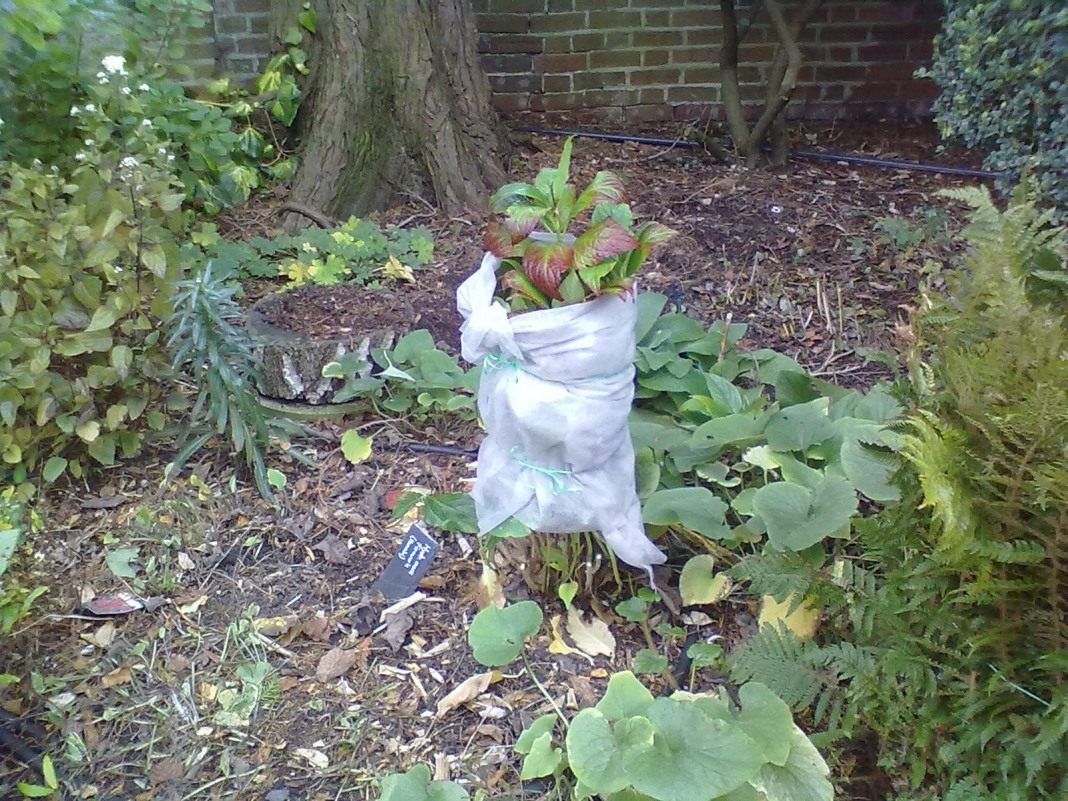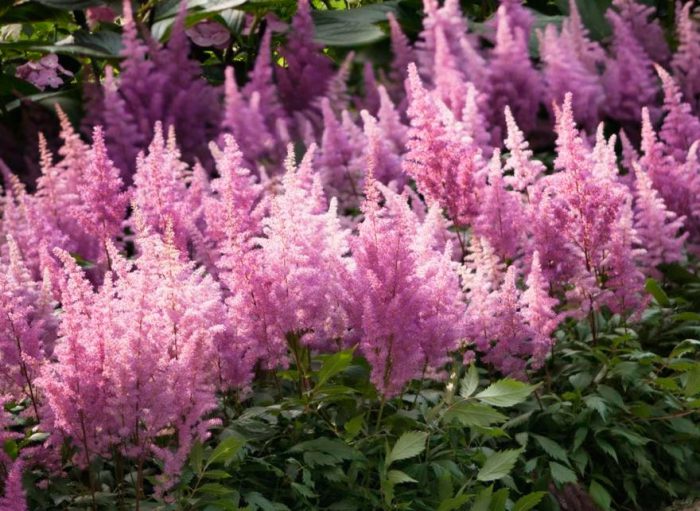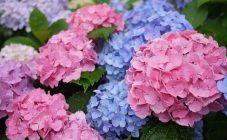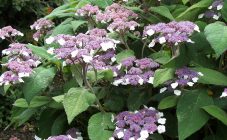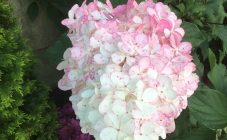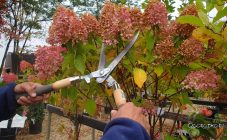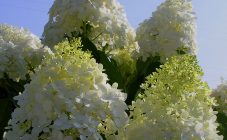Content:
Hydrangea is a beautiful plant with a long flowering period. If you know how to shape a bush, then you can achieve even better results. Some varieties can even produce vines. A distinctive feature of flowers is an amazing variety of color shades. In this article, the reader will learn how to grow a hydrangea on a trunk.
Features of agricultural technology
This plant should be planted in autumn or early spring. Moreover, if the florist lives in the northern regions of Russia, then it is preferable to plant him in the spring so that the plant can grow, take root and start up the root system. A place for planting a flower must be chosen in advance and the soil must be prepared in time. Plants love to keep it acidic and well hydrated. The landing site should not be too shaded.
For planting, a hole is formed, about 30 cm wide, long and deep. Fertilizers (organic and mineral), sand must be added to it. All this is mixed with turf. After the seedling is placed by hand into the hole, it is additionally covered with peat. The planted bush is watered and mulched (best of all with the help of humus). The plant grows equally well in the world and in partial shade.
For the winter, the plant growing in the northern regions of Russia must be removed to a cool room, where the temperature does not drop by less than 4 ° C. This is due to the fact that the plant does not tolerate frost well. In the southern regions of the country, the plant tolerates winter better, and therefore it can be planted in the fall. You can grow it in open soil with shelter (spruce branches are suitable for this).
Plant propagation
There are several breeding options for this plant. Each of them gives good results if the basic rules of agricultural technology are followed.
Using cuttings
Hydrangea can be propagated using cuttings. The best time to prepare them is April-June. To do this, choose annual and bright shoots, no more than 12 cm long.
Leaves are removed from the bottom of it. This part is treated with a growth stimulant. Then the cutting is planted in the soil in a greenhouse. Planting is carried out for the winter, the plant must be sheltered from frost.
There is a way of winter cuttings. It is carried out only in large-leaved hydrangea varieties. For this purpose, the mother plant is dug up in October. It is planted in a pot, placed in a room where the temperature does not exceed 2 ° C. In the middle of winter, it is slowly raised to 10 ° C.
By February, last year's shoots are already ripening. Cuttings are cut from them. It is necessary to ensure that they have two internodes. The sections are treated with a growth stimulant and planted in a nutrient soil.
Dividing the bush
This plant can be propagated by division. The hydrangea needs to be dug up and divided into several parts. Divide so that each part has a bud, otherwise a new plant will not grow from it.
After division, each part is planted in a previously prepared place.
Layers
This method of reproduction is used if the shoots are more than one year old.They are carefully bent to the surface of the earth and instilled so that tops remain on the surface of the earth, no more than 20 cm high.
In the spring of next year, the shoot must be separated from the mother bush and transplanted according to the usual rules.
Stem hydrangea
Paniculate, large-leaved and tree-like hydrangea varieties can be grown on a trunk. It is not at all necessary to deepen such seedlings. Panicle hydrangea on a trunk looks very beautiful and impressive with an even trunk and bright inflorescences. To create a trunk, you need to carefully monitor the plant for about three years.
The advantages of this growing method are:
- The hydrangea on the stem is very attractive and decorative.
- The plant is resistant to winter. Only in severe winters, young shoots should be covered with spruce branches.
- Hydrangea stem forms are excellently grown in landscape design. With their help, gardens are formed in a unique Japanese style. It is with the help of boles that beautiful and unique vines can be formed.
- This hydrangea can even be grown on balconies in city apartments.
To create a stem, panicle hydrangeas are best suited. To create support, a wooden or metal stake is deepened into the ground. The plant is strengthened on it in several places. Lateral shoots are pinched 2 times throughout the summer. For another summer they are cut out.
You need to cut the ring so that the barrel thickens all the time. At the beginning of the growing season, it is shortened. Crown laying begins when the main shoot grows to one and a half meters. Then skeletal branches are formed.
Standard hydrangea as a tree is fully formed only in the eighth year. But all the efforts in the care are replenished by the plant's life span - over 40 years. It is easy to form a crown with such a hydrangea. Sometimes shrubs and other low-growing plants are planted under the tree.
To obtain a standard form, vaccination is used. For this, a split is made in the standard part, where the cutting is grafted. It must contain at least three live buds.
The most important point in caring for a standard plant is pruning. Flowering, crown shape and grooming depend on it.
Plant care
The basic rules for caring for hydrangea are as follows:
- feeding with mineral plants and fertilizers (they must be taken in moderation, since hydrangea does not like excessive amounts of fertilizers);
- use slurry and humus;
- water the flower regularly (and it is necessary to ensure that the acid index of the water used for irrigation is about 5.6);
- loosening the soil (this procedure makes it possible to retain moisture, this plant does not like overdrying).
The rules for pruning a plant are as follows:
- you need to cut off the shoots at a time when the buds have already swollen;
- a young shoot is cut to 4 buds;
- if the bush is old, then it must be updated by cutting it at the root;
- in the first year of flowering, the flowers are removed: this will help to get very beautiful and abundant inflorescences the next year.
Hydrangea flowers can change color. For this, dyes are used. If you add a little potassium permanganate to the water for irrigation at home, the flowers will acquire a beautiful pink color.
Covering the plant for the winter allows for earlier flowering.
Why hydrangea does not bloom
Despite the fact that this is a relatively unpretentious plant, not all growers manage to have beautiful flowers.
The most common reasons for the lack of flowers on hydrangeas are:
- Improper fertilization. If a large amount of nitrogen fertilizers are applied to the soil, they will contribute to more intensive foliage growth. To achieve flowering, potash and phosphate fertilizers must be used.Moreover, for the winter, you need to add fertilizers, which include phosphorus.
- Excessive pruning. If you cut off all the branches for the winter, then next year the plant will definitely not bloom. You only need to remove old and dried branches from the bush.
- Improper shelter of a plant in a cold winter leads to the fact that its buds are very freezing.
- Poor watering. The plant does not tolerate dry soil.
- Landing in a place where the sun's rays are intense. They can burn the buds and they won't bloom well.
- Buying a flowering specimen from the nursery in the store leads to the fact that it did not bloom the next year. This is due to drip irrigation and a weak root system.
Hydrangea neighbors
The best neighbors for this plant are those with well-developed tubers. Boxwood, hosts, astilba are used.
Hydrangea is not placed next to plants with a poorly developed root system. They will inhibit flower growth. It is strictly forbidden to plant hydrangeas under trees. Such hydrangeas will suffer from dehydration and will soon die.
Top dressing
After two years, the plant needs feeding. To stimulate growth, a solution of 25 g of carbamide, 35 g of potassium sulfate and 10 g of superphosphate is used. All this must be dissolved in 10 liters of water.
During the budding period, 50 g of potassium sulfate and 80 g of superphosphate are introduced per 1 m2 of soil. In July, you need to pour 10 liters of mullein solution under each bush. The same is done in August.
Growing a standard hydrangea is quite laborious, especially for novice florists. But the labor expended is worth it, because in a few years you can get a very beautiful flowering plant. You can plant a flower on any personal plot, then in a few years the eye will be pleased with beautiful and unique landscape compositions.
